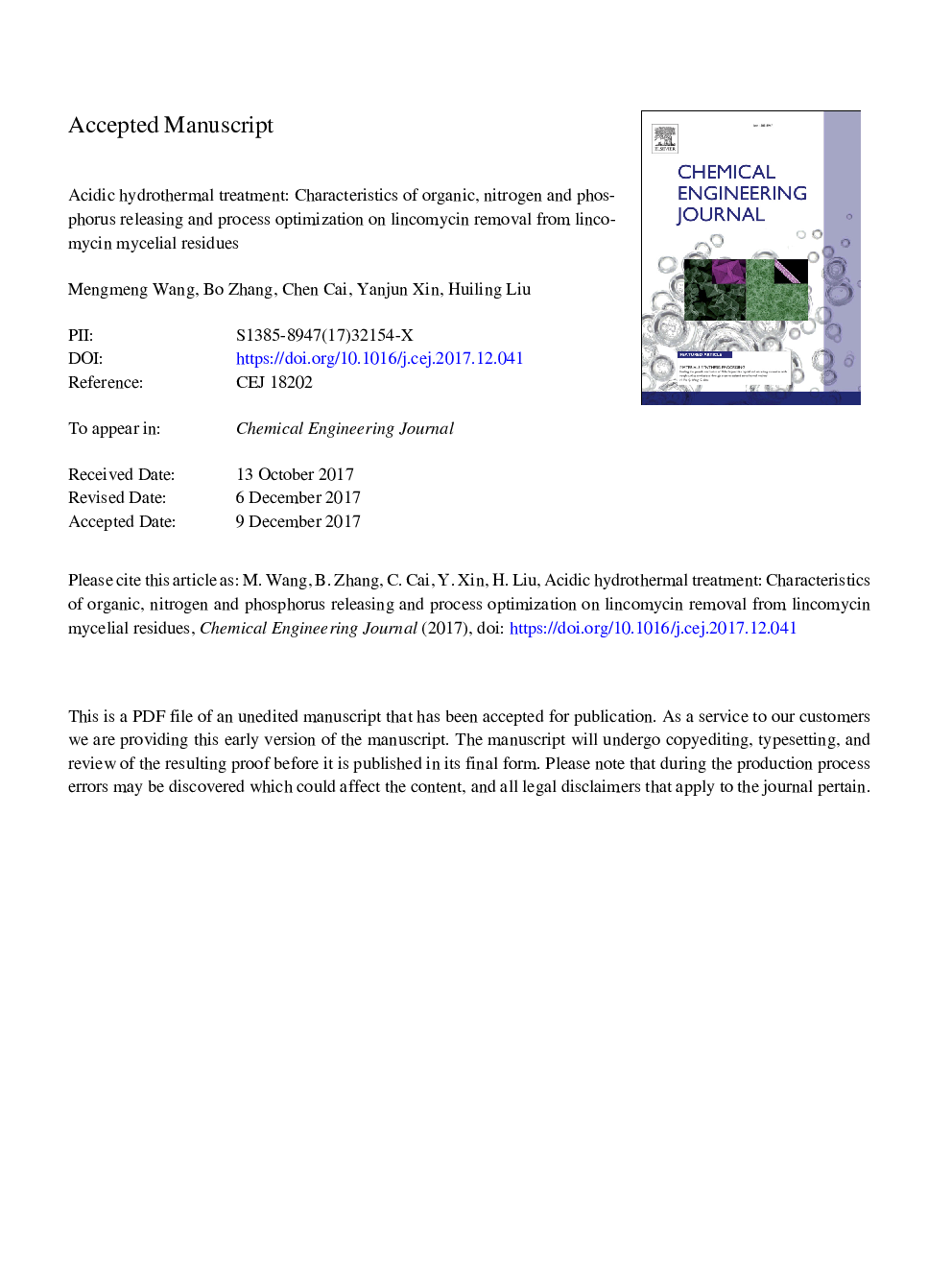| کد مقاله | کد نشریه | سال انتشار | مقاله انگلیسی | نسخه تمام متن |
|---|---|---|---|---|
| 6580634 | 1422942 | 2018 | 40 صفحه PDF | دانلود رایگان |
عنوان انگلیسی مقاله ISI
Acidic hydrothermal treatment: Characteristics of organic, nitrogen and phosphorus releasing and process optimization on lincomycin removal from lincomycin mycelial residues
ترجمه فارسی عنوان
درمان هیدروترمال اسیدی: ویژگی های آزاد سازی آلی، نیتروژن و فسفر و بهینه سازی فرآیند بر حذف لینکوماسیسین از باقی مانده های منسجم لینکومایسین
دانلود مقاله + سفارش ترجمه
دانلود مقاله ISI انگلیسی
رایگان برای ایرانیان
کلمات کلیدی
باقی مانده های میسالی لینکوماسین، درمان هیدروترمال اسیدی، انتشار نیتروژن، انتشار فسفر، حذف لینکوماسین،
موضوعات مرتبط
مهندسی و علوم پایه
مهندسی شیمی
مهندسی شیمی (عمومی)
چکیده انگلیسی
Lincomycin mycelial residues (LMRs), one kind of bio-wastes with a high biomass organic content, are limited to use due to residual lincomycin. Recycling of LMRs is not only benefit to economy but also to environment. This study developed an acidic hydrothermal method for LMRs treatment. Effects of reaction temperature (100, 130 and 160â¯Â°C), residence time (60, 120 and 180â¯min), and H2SO4 concentration (0.2, 0.4 and 0.6â¯M) on the amount and distributions of organics, nitrogen and phosphorus were investigated. In addition, these three crucial parameters for maximum removal of lincomycin were optimized using response surface methodology (RSM). Meanwhile, intermediates of lincomycin treated by acidic hydrothermal treatment (AHT) were identified by liquid chromatography - mass spectrometry (LC/MS). Antibacterial assessments of them were conducted via disk diffusion tests. Results showed that the treatments led to 34.7%-251% and 30.9%-214% in the concentrations of TN and TP, respectively, and 1.44-3.89 times higher of SCOD in the soluble phase of LMRs. Lincomycin removal rates increased with the increasing of reaction temperature, residence time and H2SO4 concentration in a certain range. The optimal conditions were obtained at activation temperature of 160â¯Â°C, residence time of 157.2â¯min and a H2SO4 concentration of 0.53â¯M, where 98.3% of lincomycin was removed. Moreover, inhibition of lincomycin after AHT on Staphyococcus aureus, with respect to untreated solutions containing this compound reduced significantly. Therefore, recycling of LMRs is promising after removal residual lincomycin via AHT.
ناشر
Database: Elsevier - ScienceDirect (ساینس دایرکت)
Journal: Chemical Engineering Journal - Volume 336, 15 March 2018, Pages 436-444
Journal: Chemical Engineering Journal - Volume 336, 15 March 2018, Pages 436-444
نویسندگان
Mengmeng Wang, Bo Zhang, Chen Cai, Yanjun Xin, Huiling Liu,
